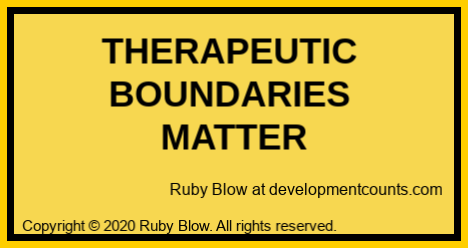Carrying the Weight of the World
Sometimes being a therapist can feel like carrying the weight of the world. Whenever I have a counseling supervisee approaching their LPC eligibility, I am reminded that the responsibility of being a mental health professional is enormous.
I am reminded because despite the supervisee’s excitement about getting their LPC, they often slow down like a stutter step before a hurdle at the Olympics: if they don’t get their footing corrected they may not clear the hurdle.
Why do counselors who have already cleared so many hurdles often falter so close to completing their LPC requirements?
I suspect it is because of the tremendous responsibility of being an independently licensed mental health professional. When graduates are working toward their independent licensure, they are responsible for their professional actions. However, they are also essentially practicing under their supervisor’s license.
Because that “coverage” can be experienced as a safety net or an umbrella of protection, supervised therapists may only begin to internalize the full weight of their professional responsibilities when they get close to practicing independently.
So what is the therapist’s responsibility during a crisis? Yesterday a supervisee asked me this question. It was prompted by the relief she heard in a community counselor’s voice when a crisis was transferred to the Georgia Crisis and Access Line.
I innately understood the relief that the therapist felt.
Solo Practice/Small Practice Managing Crisis
Those who work in small practices, solo practices or other settings wherein all of the client services rest solely on their therapist can become overwhelmed by the needs of a client with chronic mental illness and/or frequent crisis.
Many “patients” come back to therapy in their community/private settings after inpatient and partial hospitalization. Generally speaking, the imminent risk of suicide has been addressed, however the underlying cause(s) are still present. Even with family involvement at discharge and even with consultation with the community therapist, the road to recovery can be laden with many more crisis calls and crisis interventions.
The outpatient/private practice/community therapist will have a crisis plan or strategy that is outlined in the client’s informed consent. Additionally they may have a plan for safety that is generated and tailored specifically for their client when the need is determined based on assessment.
Risk Assessment and Safety Planning
We all know that risk assessment for harm to self or others involves assessing for imminent risk:
- a plan/method;
- access to a weapon or the method;
- a history of an attempts or violence toward others;
- family history with suicide etc…;
- and an inability to agree that they can stop themselves from implementing their plan.
Safety planning and intervention includes a discussion about their:
- obtaining information about their suicidal or homicidal ideation to plan for safety accordingly;
- assessing social resources (Do they live alone? Do they have support? etc…);
- their reason for not having harmed themselves thus far;
- their ability to call and reach out for help if they plan to harm themselves;
- attempting to separate the psychic pain from the self (i.e. kill the depression and pain…not yourself);
- deepening the rapport and unconditional positive regard so as to leverage the therapeutic relationship in support of life.
How all of this is managed by practitioners in solo or small settings is often determined by the resources available to the clinician or the practice. For example, providing 24 hour coverage to clients in the event of a mental health emergency is often described in the informed consent.
Informed Consent, 1013s and Multiple Cases
That description typically includes a contact number to either reach the therapist or leave a message for the therapist, alongside direction to contact a crisis line. There may also be statements about signing a release to allow communication with the hospital and so on. Some therapists have a number for a back up therapist if the primary therapist is unreachable. Other small practices may enlist an answering service and/or rotate who is on call so that each therapist gets a break but also shares in the responsibility of providing coverage.
The information needed to facilitate emergency transportation to a receiving facility would include the clinician either having access to 1013 forms and/or access to a person who can initiate a 1013. Many clinicians will use an access and crisis line for this purpose. Additionally, the clinician will need to be able to securely access the client’s address to possibly send emergency services to their location depending upon the threat.
For the solo practitioner, all of this can be further complicated by having more than one high-risk client on their caseload and managing their responsibility to another client while one or more clients are in crisis. The therapist could be trying to manage one case while a different client is waiting for their session to begin.
For small practices, it is essential to screen for the number of potentially high-risk cases one carries. The reality is that in the initial contact, the client may not present with severe depression or suicidal ideation and this can develop or be revealed later in treatment.
In some cases the client/patient may need a higher level of care. However, it is often difficult to successfully facilitate a transfer in such circumstances. Some clients do not want to open up to a new therapist; others are too impaired to complete the process of initiating new services; still others may not have the financial resources to engage in intensive therapy.
Another important factor for clinicians working in solo or small settings is having knowledge of case law and statutes that cover the location (state) where the clinician practices.
What About Homicidal Intent and Duty to Protect?
Generally speaking, we as therapists (in the state of Georgia specifically) have a duty to protect but not a duty to warn. Over thirty years ago, there was a case law established in Georgia, Bradley Center, Inc v Wessner (1982). In this case, Wessner made violent threats toward his wife while in an inpatient facility…admitting that he would likely cause her bodily harm.
He was allowed a weekend pass from the facility (The Bradley Center in Columbus, Georgia), even after making this statement of intent. He subsequently purchased a gun while on his weekend pass and killed his wife. It was determined that the hospital was empowered by law to prevent his weekend pass and detain him for 48 hours and they did not do so…the court determined that Wessner murdering his wife was “forseeable.” This case law is interpreted as primarily relating to circumstances wherein the physician (in this case)/hospital had control over the patient.
Obviously in an outpatient or small therapy practice, there is far less control. In this case…due to Wessner’s deteriorating condition and multiple hospitalizations etc., Wessner’s wife knew about his threats. The case established a duty to protect but not a duty to warn. In an outpatient setting, this would involve attempts to voluntarily or involuntarily hospitalize the person with homicidal intent.
Another relevant case in Georgia (not case law because it was not appealed and upheld) is Garner v Stone (1999). In this case a police officer (Garner) sued his psychologist (Stone) for breach of privacy after Stone, the department’s consulting psychologist, warned Garner’s superior of his fantasy to shoot the Captain and approximately 9 other officers. According to records, Garner discussed this fantasy one day after getting into an argument with his superior. Stone reported the homicidal ideation to Garner’s department 2 weeks later without re-assessing Garner. A Gwinnett County jury found in favor of the officer stating that Stone violated privileged communication. Upon reading the case, it is clear that the psychologist, Stone, did not perceive Garner’s statement as an imminent threat.
Increasing Competency and Managing Complexity
The discussion of these cases demonstrates the knowledge base that clinicians must develop in order to practice ethically. It is vital that consultation and professional learning are an ongoing aspect of a counselor’ strategy to maintain and continue to develop competency.
It is difficult to know what we don’t know. It is vital to seek the support of knowledgeable others and to review resources to aid in understanding one’s professional obligations.
I recommend the following books as great resources and references for deepening one’s understanding of ethics, law and clinical practice:
- The Counselor and the Law – A Guide to Legal and Ethical Practice, by Anne Marie Wheeler, JD and Burt Bertram, EdD
- Risk Management: Clinical, Ethical, & Legal Guidelines for Successful Practice, by William F. Doverspike
The reality is that despite our best efforts and all of the professionalism and ethics we can summon, there will be and are people with chronic mental illness or who are in acute crisis that we are unable to stop from causing harm to themselves or others.
What we need as professionals and as human beings includes:
- Respite and support from our peers and friends and family outside of the field.
- We need levity and laughter and lightness.
- We need to decrease our ideas around perfection and deepen our understanding of the art of therapy while practicing the science as much as we possibly can.
As one of my fellow clinicians and friend Phil Foster says “Be good to you.”
Copyright © 2016 Ruby Blow. All rights reserved.
Share your thoughts on Linkedin, Facebook, Twitter or log in to one of your accounts below to comment. Subscribe to my YouTube channel.





